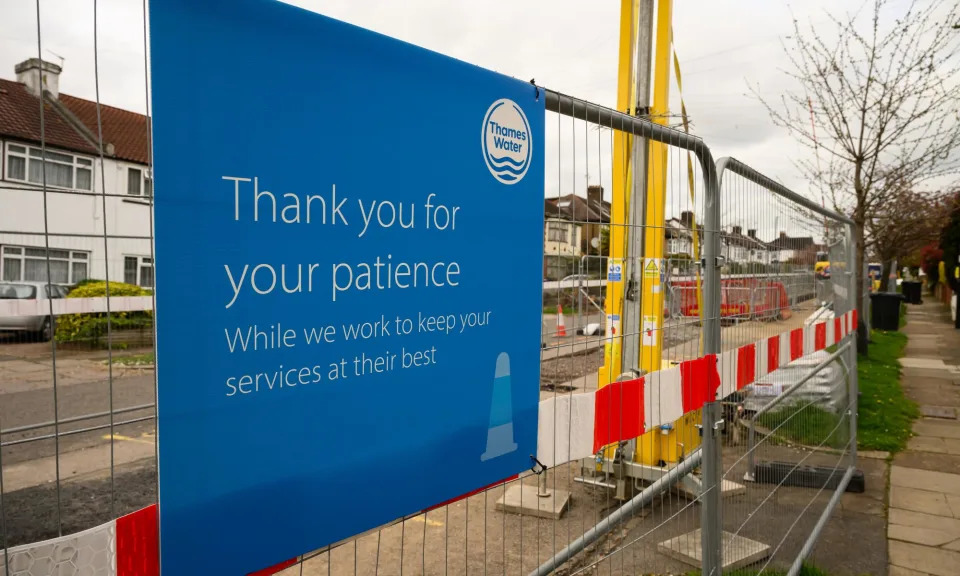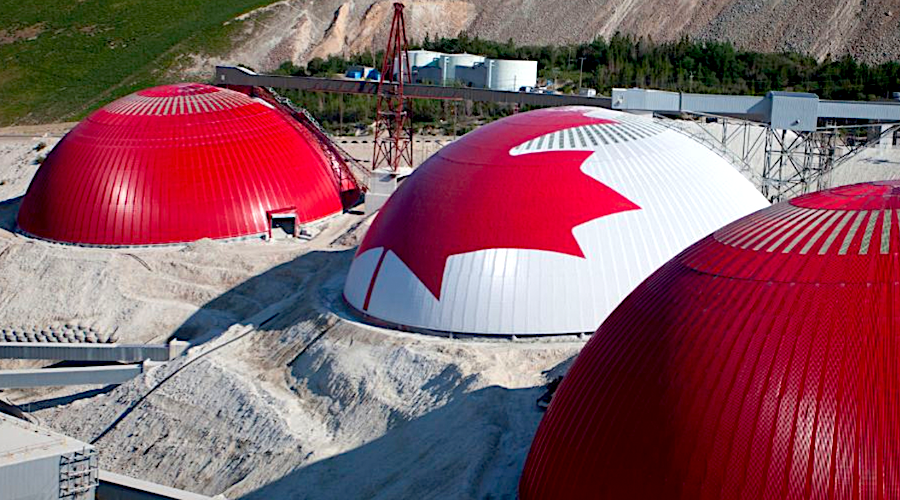Luke Barr
Wed, 17 April 2024

Thames
A leading bondholder in Thames Water has backed plans to break up the business as it races to stave off collapse.
The prospect of carving up Thames Water is gaining momentum ahead of a rescue plan that bosses are expected to unveil on Friday.
Luke Hickmore, a fund manager at Abrdn who holds secured bonds in Thames Water, said he would support a split if it meant protecting creditors’ interests.
The Telegraph revealed earlier this month that bosses were exploring a potential break-up as part of a range of scenarios to avoid nationalisation.
Under the proposals being considered, Thames Water – which serves 16 million customers – could be divided into two separate smaller companies: one covering London and the other serving the Thames Valley and Home Counties regions.
Given its size, Mr Hickmore said Thames Water must reach a positive outcome for both “political and economic reasons”, as the risk of creditors losing out would knock confidence levels across Britain’s infrastructure sector overall.
He said: “They are one of the largest issuers in the UK. That’s a pretty important outcome for everybody, whether it be pensioners or insurance companies.”
It emerged on Tuesday that Thames bosses are also reportedly weighing a possible debt raise as it hunts for new cash to secure its future.
However, City sources played down the prospect, questioning why the beleaguered supplier would tap debt markets given it is already burdened by an £18bn debt pile.
One bondholder who recently sold out of Thames said: “It’s smoking something, right? The management team is panicking and thinking about how they can make it work and they can’t.”
A restructuring adviser involved in discussions added: “I find it mesmerising that any more debt could go in. No one would allow it. It seems crazy to my mind.”
Speculation around Thames’ finances comes weeks after parent business Kemble, which represents shareholders, confirmed it is cutting off fresh funds from the business over claims regulator Ofwat has rendered the business “uninvestable”.
It is understood there has been no dialogue between Thames Water bosses and Kemble since the announcement.
Shareholders’ refusal to fulfil a £500m funding package has pushed Thames Water closer to the brink, despite bosses’ claims that the company has £2.4bn of funds to see it through the next 15 months.
A collapse into special administration – where the Government steps in to keep the company operating – has grown increasingly likely in recent weeks, with the supplier yet to convince Ofwat that it must increase bills by 40pc in order to ensure long-term profitability.
According to sources close to the company, a taxpayer bailout could cost £5bn “just to keep the lights on”.
A Thames bondholder said: “We’re all running scenarios every morning and worrying about whether they are going to go through a special administration regime.”
It is understood that breaking up the business would make it easier for Thames’ operations to be sold on to a rival once stabilised.
Colm Gibson, managing director at Berkeley Research Group, said: “It is far from certain that Thames Water would emerge from special administration as a single large company. It is entirely possible that it could be broken up into a series of smaller water companies serving local areas.”
The Government is reluctant to intervene in the handling of Thames Water given the looming election, which could make it a problem for Sir Keir Starmer if Labour succeeds at the polls later this year.
This has already led to talk across the industry that Labour is in favour of a break-up, although the party rejected the speculation Wednesday.
Last week, Chancellor Jeremy Hunt said it would be “utterly outrageous” for Ofwat to grant Thames Water’s demands for higher household bills.
He said shareholders in the company “had an obligation to sort out the mess” when asked whether they had a duty to inject more cash into the business.
Thames Water declined to comment.
Lars Mucklejohn
Wed, 17 April 2024

Rishi Sunak's government is facing a political headache as it may be forced to temporarily nationalise Thames Water
Traders at major US hedge funds are betting against the debt and equity of British water companies amid fears over their levels of debt and the risk of contagion across the sector sparked by the crisis engulfing Thames Water.
Millennium Management had disclosed a short position on northwest-focused United Utilities, while Arrowstreet Capital has bet against the southwest’s Pennon. United Utilities has the most debt of any UK water company behind Thames.
Bloomberg, which first reported the news, cited data from S&P Global Market Intelligence showing that short interest on United Utilities had jumped to almost seven per cent on 12 April from two per cent last July.
Meanwhile, short interest in Southern Water bonds jumped to 6.6 per cent this week from roughly 0.8 per cent at the start of the year.
Debt is commonplace across the water sector. Suppliers have collectively amassed more than £51bn in net debt in the 32 years between privatisation in 1991 to March 2023, according to research by the Financial Times.
Even as the sector has come under increasing scrutiny, debt has continued to rise. In the past two years alone, the figure has jumped £8.2bn.
The government is facing the costly prospect of having to temporarily nationalise Thames, which is the UK’s biggest water supplier with some 16m customers, to prevent it from collapsing.
The firm is struggling under a £15.6bn debt pile, which has become increasingly difficult to service amid higher interest rates.
Regulator Ofwat last month rejected Thames’ plan to hike bills by 40 per cent to help ease its debt pile, causing shareholders to pull £500m of emergency funding. The crisis worsened earlier this month when Thames’ parent company Kemble defaulted on around £1.4bn worth of debt.
Thames Water now has under two months to convince Ofwat that it has a feasible survival plan before it publishes a determination on how much water companies can charge customers on 12 June.
Whether Thames can strike a deal with the regulator will be a crucial signal on how likely it is to attract new equity investors and avoid falling into special administration.
Royal London, among the asset managers most exposed to Kemble’s bonds, has argued that if the government takes over Thames, and triggers losses for bondholders, it could deter much-needed investment from other infrastructure assets.
Kemble is expected to miss its repayment deadline for a £190m loan to a consortium of four banks, including two state-owned Chinese lenders, at the end of this month.
Thames has said it has £2.4bn of liquidity available and can still meet its commitments until at least May 2025. However, high borrowing costs and fines from Ofwat risk significantly shrinking this cash pile.
Thames declined to comment when approached by City A.M.
Alex Lawson and Anna Isaac
Tue, 16 April 2024
The Guardian

Ongoing water pipe work in London. Thames Water already has £15.6bn of debt.
Thames Water is preparing to tap debt markets within weeks in an attempt to fund a rescue plan and repair its threadbare finances, the Guardian can reveal.
It is understood the embattled water company is planning to publish a revised five-year spending plan within days, before a deadline next month. Its board is expected to meet on Thursday to rubber-stamp the plan, and executives hope to release it on Friday.
Sources said the company then intends to wait for up to a week before approaching lenders to fund the proposals and has sought advice from City bankers and lawyers on the debt issuance. Financiers said the proposed timing of the fresh borrowing was surprising, given huge uncertainty around Thames’s future.
Britain’s biggest and most heavily indebted water company is fighting to secure its financial future, and has already said it only has cash reserves to fund its operations for the next 15 months without a substantial increase in bills.
Thames’s plans to raise fresh debt come despite it labouring under a £15.6bn debt pile. Its parent company, Kemble Water Finance, missed an interest payment earlier this month, and said it will not be able to repay a £190m loan due by the end of April.
Its shareholders also recently backtracked on plans to inject £500m into the business amid a standoff with the industry regulator, Ofwat. The investors, which include USS and Omers, said Thames’s original business plan was “uninvestible” (sic) and demanded Ofwat allow it to raise bills sharply, levy lower fines and pay dividends.
The company plans to republish the spending plan covering 2025 to 2030, which was first submitted to Ofwat last October, to allow regulators and investors to scrutinise it. Thames then intends to give markets a few days to settle and “absorb” the information before pushing the button on the debt plan, sources said.
Thames’s original plan was to raise bills by 40% to fund an £18.7bn investment programme. However, the size of its investment plan is expected to be revised upwards by between £1bn and £1.5bn, with the £1.5bn more likely.
It is unclear how much of the extra funds Thames hopes to raise through issuing new debt, but sources said it would have to be sizeable given the scale of its funding needs.
Sources said that Thames, which has 16 million customers across London and the Thames valley, hopes to price the bonds in late April, before issuing the debt formally in early May.
Lenders signing up to the debt issuance could be taking a gamble, however, as it is unclear how much Ofwat will allow Thames to raise through higher consumer bills.
Ofwat is due to publish its draft response to Thames’s plan on 12 June, with water companies’ plans not signed off until December. The Guardian revealed this week that the company had six weeks to convince the regulator that it had a credible survival plan for its business,before an Ofwat board meeting on 23 May.
Ofwat is understood to be sceptical that Thames’s current business plan is viable or fair on consumers and is demanding a separate turnaround strategy for reforms to its management and governance.
The company could be hamstrung by the relatively small pool of debt and equity investors in the UK water sector, and the high-profile concerns expressed over Thames’ future. Bonds in its parent company are trading at a steep discount after its default.
Other possible scenarios include a renationalising the company, an attempt to find new shareholders – potentially through a stock market float – a debt-for-equity swap and a breakup of the company.
Although Thames’s operating company has £15.6bn of debt, the wider group has borrowings of more than £18bn across in its byzantine corporate structure.
Thames’s financial troubles have drawn further attention to the stewardship of the company by Macquarie, the Australian bank that previously owned the water supplier and which has been heavily criticised for building huge debts at Thames while paying dividends to shareholders.
The company’s current backers include the Canadian pensions firm Omers; the UK university staff pension scheme; a subsidiary of the Abu Dhabi sovereign wealth fund and China’s sovereign wealth fund.
Thames Water declined to comment.










